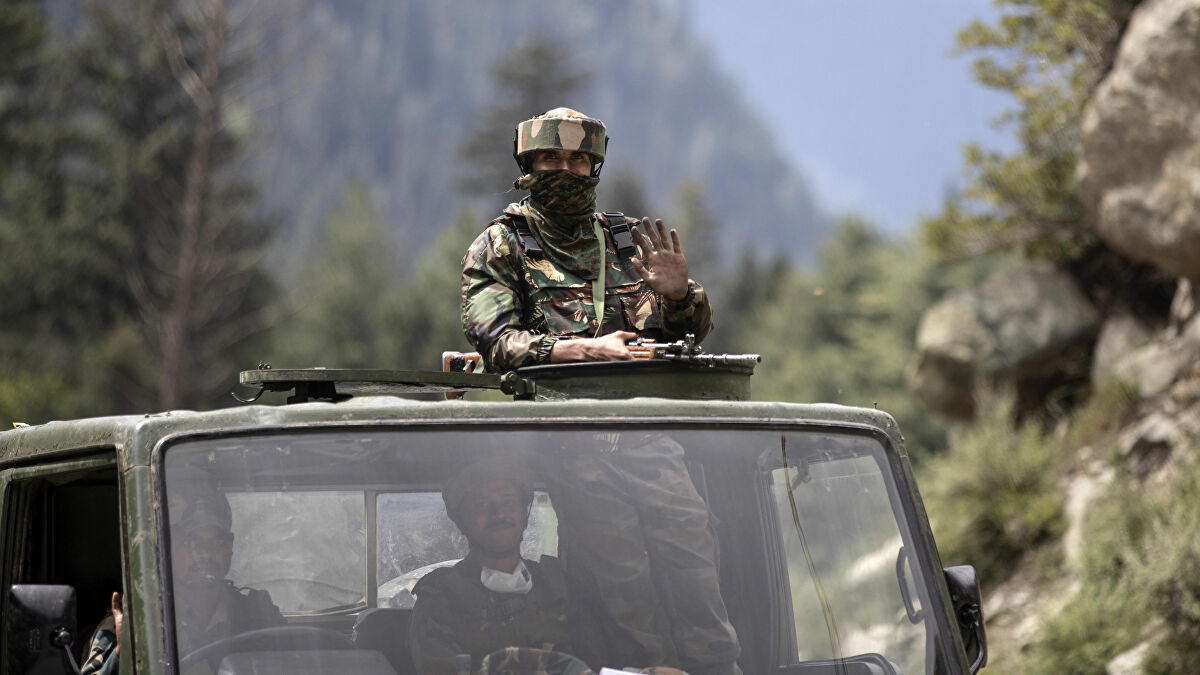The first shots fired in Ladakh in more than four decades have reverberated from Beijing to New Delhi with a chilling message that peace can no longer be taken for granted in the region if the India-China standoff is not resolved soon.
It also seems to mark the demise of agreements to desist from using firearms to prevent any escalation.
Each country had its versions of the evening gunfire on Monday, albeit just warning shots in the air.
India says Chinese troops fired in the air to signal their own troops to hold back from proceeding towards Indian positions on a high point. According to China, Indian troops fired to threaten patrolling border guards.
Either way, the first shots since 1975 at the Line of Actual Control (LAC) of the disputed border seem to be loaded with messages.
A warning shot from India would be sending a loud message that India means business. After being on the back foot for more than four months, and having regrouped and positioned itself well and gained ascendance in some parts of the embattled region, India is in a position to send a bold message.
“India, while is committed to disengagement and de-escalating the situation on the LAC, China continues to undertake provocative activities to escalate,’’ the Defense Ministry in New Delhi said.
“At no stage has the Indian Army transgressed across the LAC or resorted to use of any aggressive means, including firing.’’
For China, it could be an excuse to escalate to come closer to achieving its objectives, foreign policy experts say. China has been incensed at being pushed back to a disadvantageous position around Pangong Lake in Ladakh, rendering useless years of planning for a stealth encroachment into Indian territories.
India’s actions seriously violated the relevant agreements and agreements between China and India, pushing up regional tensions and easily causing misunderstandings and misjudgments,’’ PLA spokesman Zhang Shuili said. “They are serious military provocations and are of very bad nature.’’
While China still holds on to the gains it made from the incursions from late April to early May in other areas across Ladakh, it can see for sure its image of invincibility being shattered along with its position of dominance and intimidation over India.
To make matters worse for China, it lost the crucial position on commanding heights on surrounding mountains that has tilted the balance of power. India now has its battle tanks, artillery guns, and its troops battle-ready with a clear view of Chinese positions and can react swiftly to prevent any further aggression.
Helping India gain the critical positions was a mission by soldiers from a special forces unit on the night of August 29. The unit comprises soldiers whose origin is Tibet. Elders of these soldiers took refuge in India after being ousted by China in 1950 as it invaded the plateau and annexed the roof of the world, leaving them seething and bitter.
Ryan Clarke, a visiting senior research fellow at the East Asian Institute, National University of Singapore, writes in a new analysis that the stakes for both the countries are much higher than they were in 1962, when the two last had a war.
“What drives today’s tensions are likely much broader strategic and environmental considerations, and not short-term tactical considerations or ephemeral factors, such as nationalism,’’ Clarke wrote in his report on India-China conflicts.
Last night’s incident carries several messages for China before the September 10 meeting of foreign ministers of India S. Jaishankar and China’s Wang Yi, on the sidelines of the Shanghai Cooperation Organization meeting in Moscow.
A similar meeting between defense ministers of the two countries in Moscow on September 5 ended with both reiterating their positions. India sought talks to help defuse and de-escalate the situation, China declined to cede any land it occupied. China’s Defense Minister Wei Fenghe accused India of unilaterally altering the status quo.
Soon after last Friday, in a seemingly unrelated but significant development, Chinese President Xi Jinping cancelled his visit to Pakistan, giving Covid-19 as a reason, but triggering speculation.
Since the Moscow meeting, India’s Foreign Minister and Foreign Secretary have said the border dispute and overall relations can’t be separated and that it can’t be business as usual until China restores the status quo as it existed in March-April before its incursions.
It is possible to sense a change in sentiment and determination. Since the incursions, more than half a dozen meetings of Special Representatives haven’t yielded India much, except to be prepared for any eventuality.
China yesterday fired another warning shot, stating it never recognized the north-eastern state of Arunachal Pradesh as part of India, describing it as South Tibet instead. The statement added concern in India with its 3,488km mountainous and largely un-demarcated border with China.
In a major boost to its military, India yesterday successfully tested a hypersonic missile and joined the small club of the United States, Russia and China that have this technology. A clear message is India can fire at six times the speed of sound and fire beyond Asia, including all of China. Nuclear-armed India at present has a wide range of missiles.
In New Delhi, the army chief today briefed the defense minister and the chief of defense staff held meetings with the chiefs of all the three services. The army chief was also scheduled to meet the top commanders.
On September 10, France’s Defense Minister Florence Parly will arrive in India in a special aircraft for the induction of Rafale fighter jets into the Indian Air Force. The Rafales are expected to give greater teeth and maneuverability to the air force. (Asian Times)






